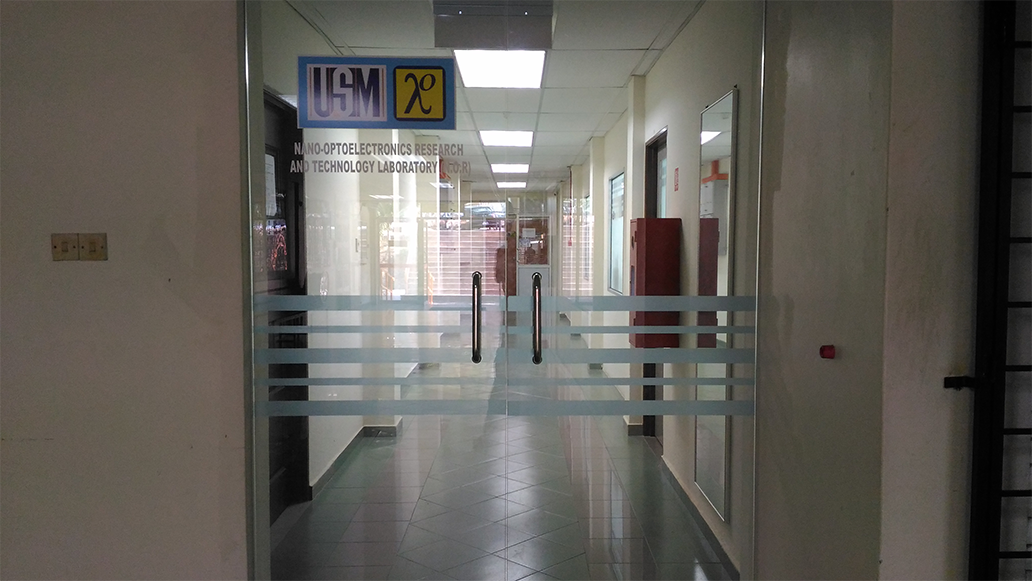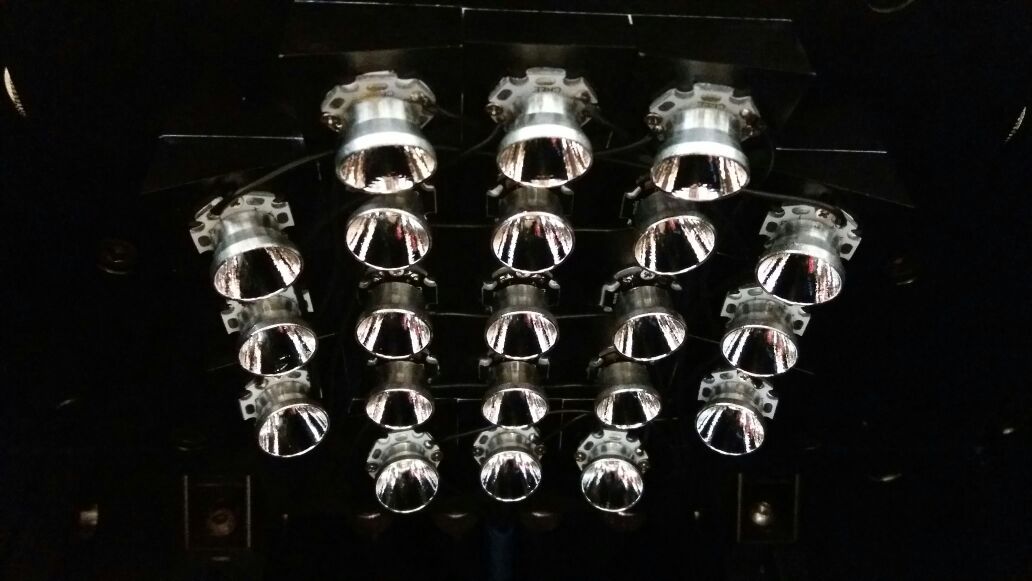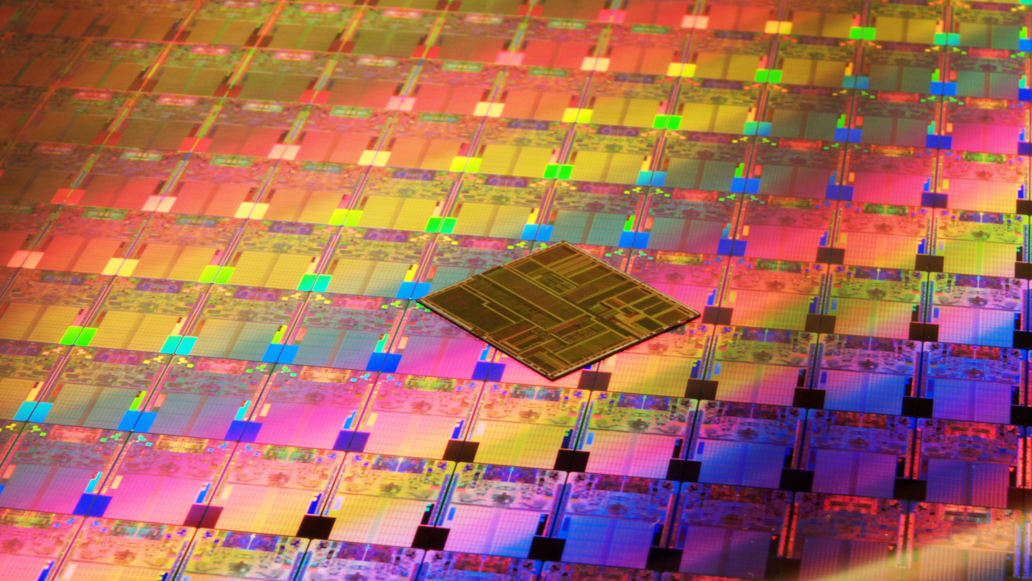
INOR Background
Institute of Nano Optoelectronics Research and Technology (INOR) focuses on research and development (R&D) from the areas of nanoscience, nanomaterials, nanofabrication and nanoengineering that are collectively building intellectual and technological bridges from nanoscale concepts to practical nano optoelectronic devices and systems. This institute has been considered to be one of the most modern and innovative research laboratories on optoelectronic and nanotechnology in Universiti Sains Malaysia which has an extensive range of equipment and facilities for growth, fabrication and characterization of optoelectronic and electronic devices at nanoscale. The physical structure and construction of the new laboratory are estimated to be worth RM 3 million (~USD 0.7 million); the equipment and facilities have cost another RM 15 million (~USD 3.5 million) and total floor area of approximately 300 m2. The growth and fabrication equipment such as Metalorganic Chemical Vapor Deposition (MOCVD), E-beam evaporator system, Maskless Lithography system, Inductive Couple Plasma Etching System (ICP), Rapid Thermal Processor (RTP), Single Zone Tube Furnace and High Temperature Furnace are capable to produce nanoscale thin films and devices. Meanwhile the nanoscale characterization tools such as Electroluminescence, High Resolution X-Ray Diffraction (HRXRD), Photoluminescence Spectroscopy System, Optical Microscope, Probe station for Quick test, Probe Station with Micro-Positioner, Capacitance-Voltage/Current-Voltage (CV/IV) measurement systems are properly equipped to give the best results of morphology, structural, optical, and electrical properties of the materials. INOR is also supported by strong collaborations with well-known national and international universities as well as industries, in particular with the 2014 Nobel Laureate in Physics, Prof. Dr. Shuji Nakamura from the University of California Santa Barbara, on the technology transfer program related to GaN on GaN based LED research. We are ambitiously looking for future collaborations with more universities as well as industries in our niche areas: Nano and Advanced Materials, LED/Laser, Sensors, Solar Cell and Power Devices.
Academic
INOR offers PhD and MSc in Optoelectronics for the following research fields i.e. Nano Materials Fabrication and Characterization; Nano Materials and Devices; Nano Device and Packaging; Modelling and Simulation of Nano Optoelectronic Devices; Nano Integrated Systems; Solid State Lighting Solutions; and Nano Optics. INOR is also offering Master of Science (Nano-Optoelectronics) Mixed Mode Program in both full time and part time modes, which are opened for registration in both Semester I and Semester II. The program is in line with the current requirements in the field of Nano Optoelectronics, such as energy-efficient devices, renewable energy sources, green technology, air and water purification, light-based communications, nano medicine, and more. In addition, the uniqueness of the program is the integration of nanotechnology and optoelectronics. The program is also in line with current industry needs and is able to produce knowledgeable and skilled graduates to solve fundamental problems as well as research and development issues.


Research Niche Area
INOR focuses on research and development (R&D) from the areas of nanoscience, nanomaterials, nanofabrication and nanoengineering that are collectively building intellectual and technological bridges from nanoscale concepts to practical nano optoelectronic devices and systems. Our research niche areas are Nano and Advanced Materials, Light Emitting Diode (LED)/Laser, Sensor, Solar Cell, and Power Device.
Laboratory Testing and Characterizations
INOR offers variety laboratory services with affordable charges such as deposition, analysis of structural, electrical, optical, device fabrication and sample treatments. We will ensure fast feedback of results and data with great accuracy.

The Timeline of INOR
Funding Received
- From The Ministry of Science, Technology and Innovation (MOSTI), Malaysia under IRPA (RM8) Strategic Research.
- Program title: Blue Light Emitting Devices. Total budget = RM22.5 mllion.
2002
2004
NOR Lab Established
- Nano-optoelectronics Research and Technology (NOR) laboratory, School of Physics, USM was soft launched by the USM Deputy Vice Chancellor of Research and Innovation, Dato Prof. Dr. Idris Salleh on 20th November 2004.
Started operation
- Served as a research, teaching as well as a service laboratory. The services include characterization, calibration, testing and consultation. The equipment and facilities in NOR Lab are estimated to be worth RM 25 million
2005
2009
Funding from Islamic Development Bank (IDB)
- Few high-end characterization tools were purchased, i.e., FESEM, RF sputtering system, and AFM.
Establishment of Institute of Nano Optoelectronics Research and Technology (INOR)
- The first proposal for the establishment of Institute of Nano Optoelectronics Research and Technology (INOR) was prepared and presented in the Board of School of Physics.
2013
2014
INOR as a Centre of Excellence (CoE)
- USM and Ministry of Higher Education Malaysia have approved proposal for the establishment of Institute of Nano Optoelectronics Research and Technology (INOR).
Project Collaboration
- Collaboration with 2014 Nobel Laureate in Physics, Prof. Dr. Shuji Nakamura and University of California Santa Barbara, USA on the GaN on GaN LED Project under the Technology Transfer Programme.
- Offers Master of Science (Optoelectronics) and Doctor of Philosophy by research mode.
2015
2017
Expanding
- Fully renovated administrative office at sains@usm.
- New MOCVD and Fabrication laboratory at sains@usm.
Mixed Mode Programme
- Offers new Mixed Mode Programme: Master of Science (Nanotechnology and Optoelectronics)
2018
2024
Higher Education Center of Excellence (HICoE)
Appointed as the new Higher Education Center of Excellence (HICoE) by the Malaysian Ministry of Higher Education (MoHE), for the Niche Area of Knowledge and Discovery of Frontiers. The focused niche is III-Nitrides Epitaxy for Optoelectronics and Advanced Devices.